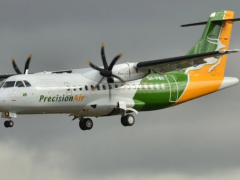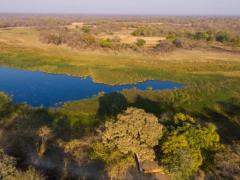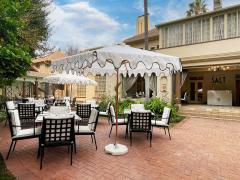I have only visited Madagascar once. It was in 1992, when a South African delegation was invited to visit the island as part of the resumption of diplomatic ties between the two countries. Thankfully, I escaped the official programme, which entailed a lot of receptions and dutiful trade visits. I was able to do the touristy-type things – and my vow to return for a longer visit has never been abandoned (although now I am putting it off until my children can come with me).
Madagascar is one of those places you have to visit at least once in your life. Clever people take several months and do it properly. Some people just have to skim the surface and experience whatever they can in the short time available. But no matter how long you stay, it is one of those haunting places that never quite leaves you.
I will never forget, for instance, that first glimpse of the capital, Antananarivo, rising on its hill from a flat plain of emerald-green rice paddies like a huge medieval castle in the middle of a vast green lake. Even the smallest and poorest of the wooden houses in the city is built like a miniature French chateau, and in the evening the lamps come on in every window and give a warm sparkle to every narrow street.
Our first night was spent in an ‘Auberge’ on the outskirts of the city: tiny wooden rooms on stilts joined by wooden walkways. The plumbing was eccentric, to say the least, and one was a bit nervous about leaning against the wall in case it gave way, but the charm of the place was undeniable. This was also our first brush with Malagasy cuisine, which is Creole in character but unique in taste.
Of course we visited the palace of Ranavalona, the mad Malagasy queen who ruled the island with terrible cruelty until 1861. The palace burnt down in 1995 on the eve of being declared a Unesco World Heritage Site but has now largely been rebuilt. The palace itself is just like Madagascar – familiar in a crazed and unique way. Everything about it is strange and different.
From Tana we went north to Nosy Be, a holiday island sheltered by the mainland from the winds of the Indian Ocean. It used to be called the ‘scented isle’ and when you land you find out why – it is home to the world’s largest plantations of ylang-ylang. From Nosy Be we took canoes to the lemur island of Nosy Komba for a nature walk and a friendly dive-bombing by lemurs and we had a day’s diving off a fitted-out launch in the marine park off Nosy Tanikely.
We took the nature walk after that, and I will never forget my lesson in pollinating vanilla vines – it’s done with a paintbrush. Of course you then have to buy fragrant vanilla pods from the vendors on the beach, along with carved wooden model boats and embroidered tablecloths.
The day’s diving off Nosy Tanikely was also one of these things you never forget – the first dive was on shallow reefs, and you really had to elbow the fish aside to see any marine vegetation. The second dive was off the continental shelf that fades away down into the silent blue depths, where white-tipped sharks swirl and you feel as if you are hovering over the edge of the universe. Lunch that day was served under palm trees on the beach, with curried prawns and the largest mangoes I have ever seen.
It is possible to stay in five-star luxury in Madagascar, with marble floors, room service, glittering swimming pools and uniformed porters. But then you will miss the real Madagascar – and you are denying yourself the experience of an island that has set out, from its earliest days, to be as different from the rest of the world as it is possible to be while still remaining on earth.













